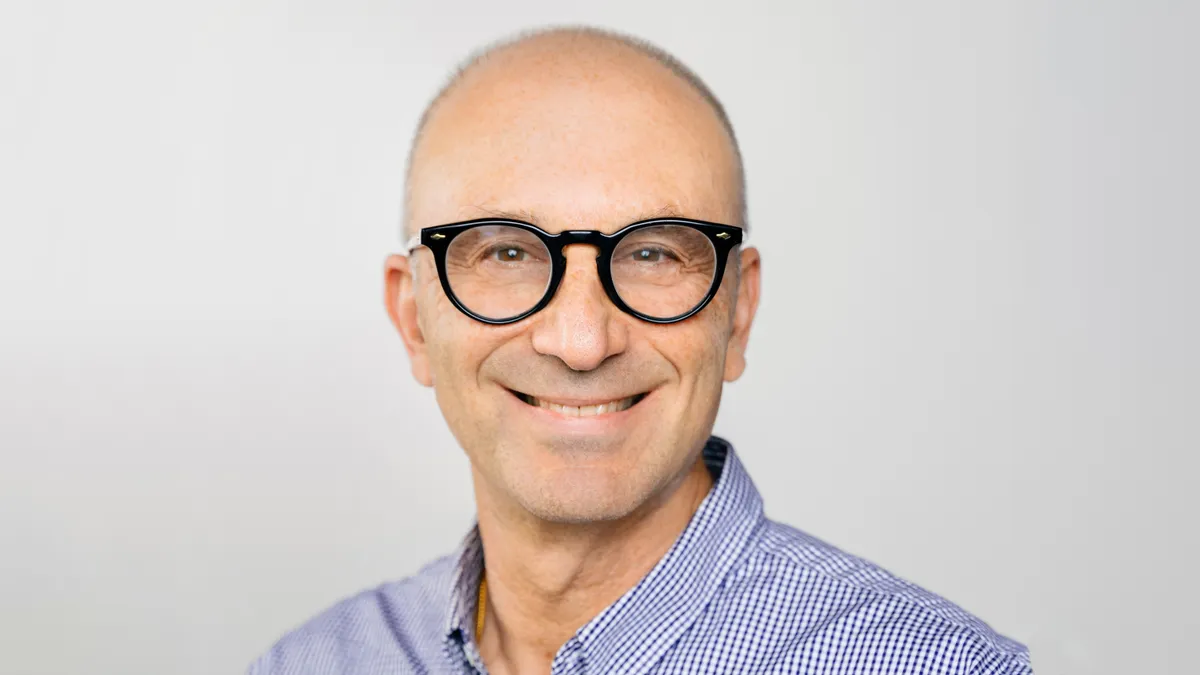Mary Pittman says working in public health is being “a little bit like a sleuth.” There are mysteries to be solved, patterns to be found and clues to be followed backward until you discover an answer.
She describes one neighborhood with unusually high asthma rates — two or three times higher, than the average, in fact — among children who lived there. Each of these children might have been treated individually at their pediatrician’s offices, with their doctors going through the familiar routine of teaching them how to use their inhalers properly. But those case-by-case interventions wouldn’t answer the bigger question: Why were there so many children with asthma there in the first place?
In this case, the answer was trucks.
“Trucks down near the port were parking in that neighborhood, and they were idling, so the diesel was being breathed in by these kids all the time,” Pittman says.
That kind of investigation and sleuthing is the core of what public health is all about: Finding the root cause of a problem that affects many people, using data and evidence to evaluate it and implementing programs to solve it.
“It’s not just giving kids more instruction on how to use an inhaler,” she says, “It’s to get the idling trucks out of the neighborhood.”
Pittman, who was recognized among the PharmaVoice 100 in 2020, is president and CEO of the Public Health Institute, an independent nonprofit organization headquartered in Oakland, Calif., that generates and promotes research, leadership and partnerships for public health policy, programs, systems and practices.
Over the course of more than 40 years working in public health, Pittman has watched the world change for the better and problems get solved, from eradicating smallpox and polio in the U.S., to the introduction of seat belt laws, to removing sugary drinks from school vending machines, to the success of antismoking campaigns.
“You’re working hard on a big problem, but you see that it is possible to solve it,” she says.
But what she’s also discovered is that in the world of public health, there’s always a new threat lurking around the corner.
Discovering public health
As a cell and molecular biology major at the University at Buffalo in New York, public health wasn’t on Pittman’s radar until she worked on a grant-funded, drug-prevention program as an undergrad.
“I was planning on going to medical school,” she said, until one of her professors suggested a different path. “He said, ‘If I were you, knowing you, I would only go to a school that had social medicine or community medicine. Or I’d consider getting a degree in public health.’”
The only problem?
“I didn’t know what public health was,” she said, beyond “rudimentary” things like animal control and clean water.
But she quickly learned more assisting a faculty member who was researching accreditation of public health schools. Over the course of that work, she became “very intrigued” by the field and its promise, and eventually ended up getting a master’s in public health, a master’s in city and regional planning, focusing on housing, and finally, her doctorate.
Root causes and partnering to solve them
Before she fully understood what public health was, Pittman knew that she was interested in providing broad-scale interventions that helped entire communities, rather than changing the health of individuals one person at a time.
“I thought there were ways that we could change the environment so that was easier for people to be healthy,” she says. “What I didn’t realize was that I was describing public health.”
"The community knows their community best, and they know how to intervene if you listen to them, you engage them, and you provide them the resources that they need.”

Mary Pittman
CEO of the Public Health Institute
She realized she was motivated to find the “root cause” of health problems by asking the question, “Why are some people healthy and others aren’t?” and following the evidence until finding an answer.
But finding the root cause of a problem isn’t enough to solve it: It also takes partnerships with expert stakeholders. Pittman points to the public health interventions HIV/AIDS epidemic of the early 1980s as a model for this, since it combined research into how the disease is transmitted; community and individual education; pharmaceutical interventions; influencing policy to get treatments covered; and battling stigma.
“When I started at the San Francisco Health Department [in 1980], it was the beginning of the AIDS epidemic and what I saw was that in public health, each person’s role is connected and vital,” she says. “It was working on [an] individual level for education and intervention, but also on a much broader community level.”
She’s also learned that in addition to evidence-based research to develop public health interventions, it’s important to work with the people who are being directly affected by a particular public health problem. She saw this recently during the COVID-19 pandemic in working with farmworker communities in California’s Central Valley.
“They knew how to get people to go to a local testing site or vaccination site,” Pittman says. “The community knows their community best, and they know how to intervene if you listen to them, you engage them, and you provide them the resources that they need.”
Not finished yet
Despite seeing tough problems get solved over the course of her 40-plus year career, Pittman continues to work tirelessly — and get frustrated and angry — over public health issues, from the politicization of COVID-19 and the attacks on public health leaders to the regression she’s seen on issues like vaccination rates and women’s health.
For instance, she points to the stark increase in maternal mortality rates — they’re up 20% between 2019 and 2020, according to the CDC — and the policies that erode women’s healthcare.
“I take a look at the policy decisions that are being made about a woman’s right to choose her own fertility, when she has a child, and the juxtaposition with the lack of support. If you’re going to force women to continue a pregnancy, then you should have supports so that that pregnancy can be a healthy one, so that children can grow up healthy,” she says. “You’re forcing people to continue a pregnancy, but you don’t care that women are dying.”
Instead of getting discouraged, though, Pittman soldiers on.
“It’s not just a job,” she says. “It’s a lifetime commitment.”




















